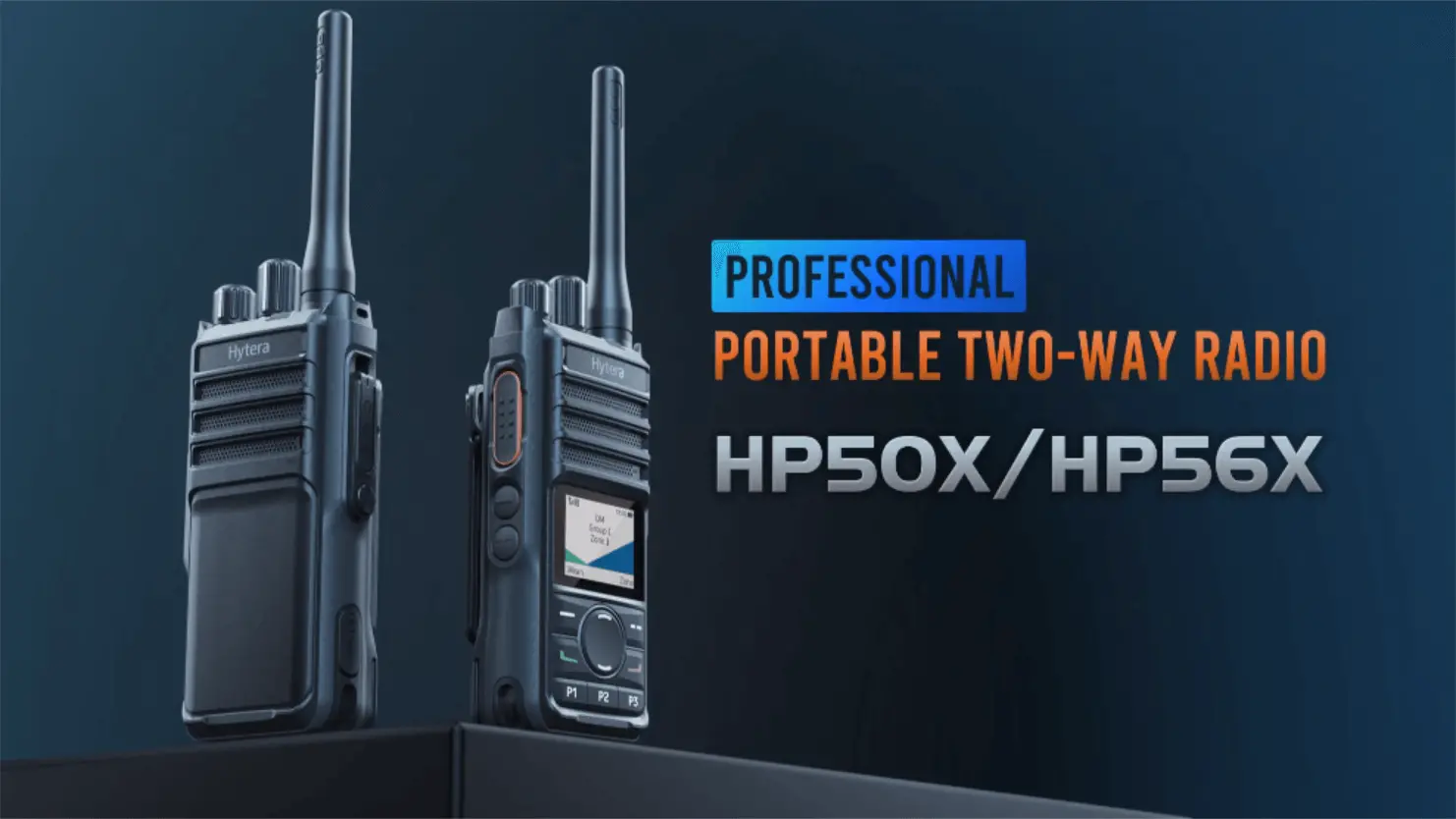
What is a waterproof two-way radio?
Also, a waterproof two-way radio is an essential tool in various worksite scenarios where water exposure is a concern. It is ideal for construction sites, outdoor maintenance, and emergency response teams working in harsh weather conditions. For instance, construction workers can use them during heavy rain to coordinate tasks effectively. Outdoor maintenance crews can rely on them while working near water bodies or in rainy weather. Emergency response teams can count on their reliable communication capabilities during water-related incidents or natural disasters. With their durable and waterproof design, these radios provide a dependable means of communication in demanding worksite conditions.
Hytera Waterproof Communication Solutions
Hytera offers waterproof two-way radios designed to withstand any working conditions, ensuring peak performance and durability. Our reliable and versatile waterproof radios include the advanced DMR two-way radio H series, the latest Mission Critical TETRA Portable Radio PT590, and commercial digital two-way radios. These radios enable clear and effective communication with lifeguards in emergency rescue situations, facilitate boat-to-ship connections, and enhance coordination during complex water sports activities. With Hytera waterproof radios, you don't have to worry about losing contact with your team during a rainstorm when you're crossing a field, as the radios are protected against water damage.
High IP waterproof rating
Rich other features
Meet a variety of harsh scenarios
Let's explore the waterproof two-way radios from Hytera that can provide assistance when you need it.
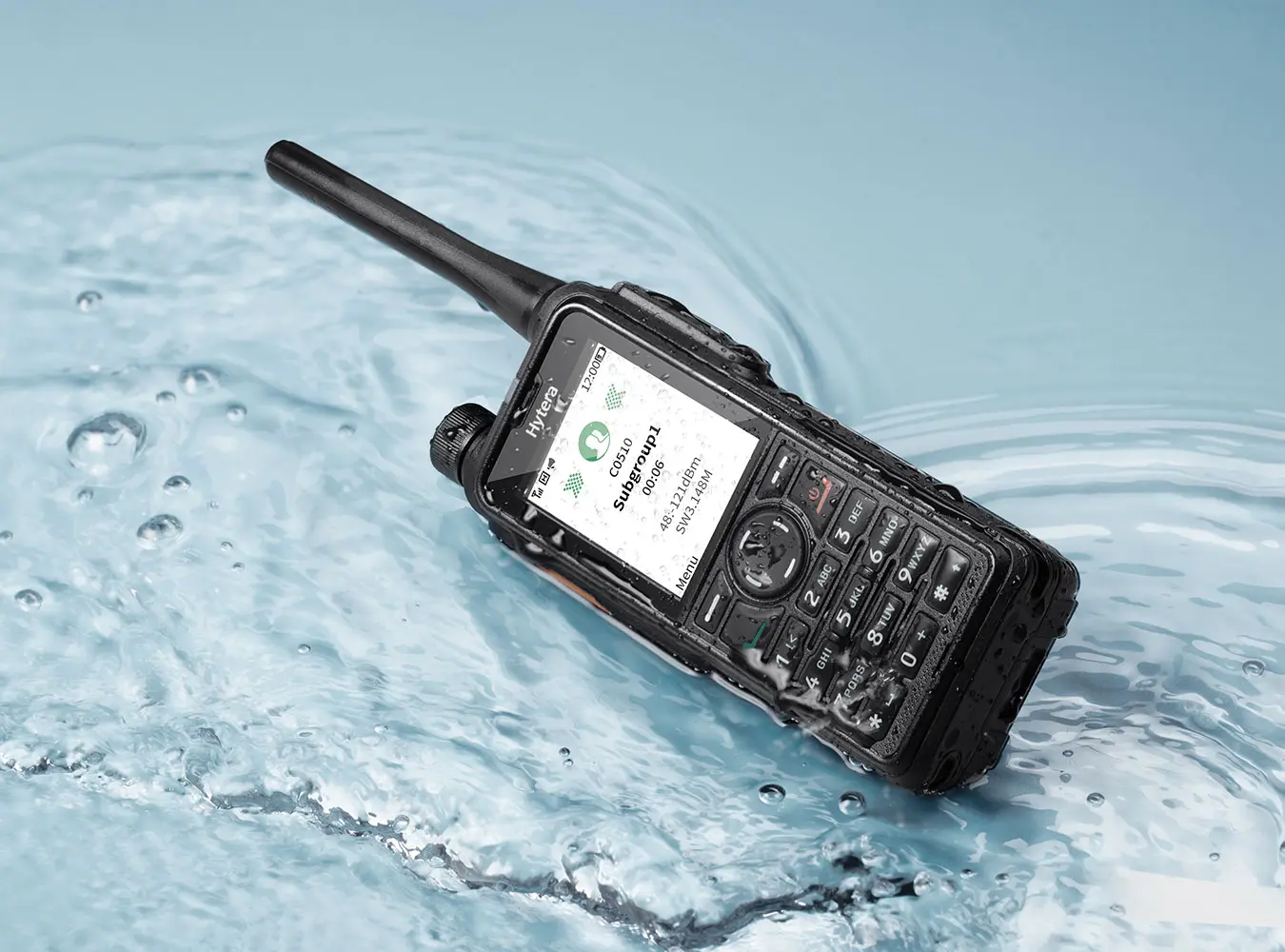
HP78X Professional DMR Waterproof Two-Way Radio
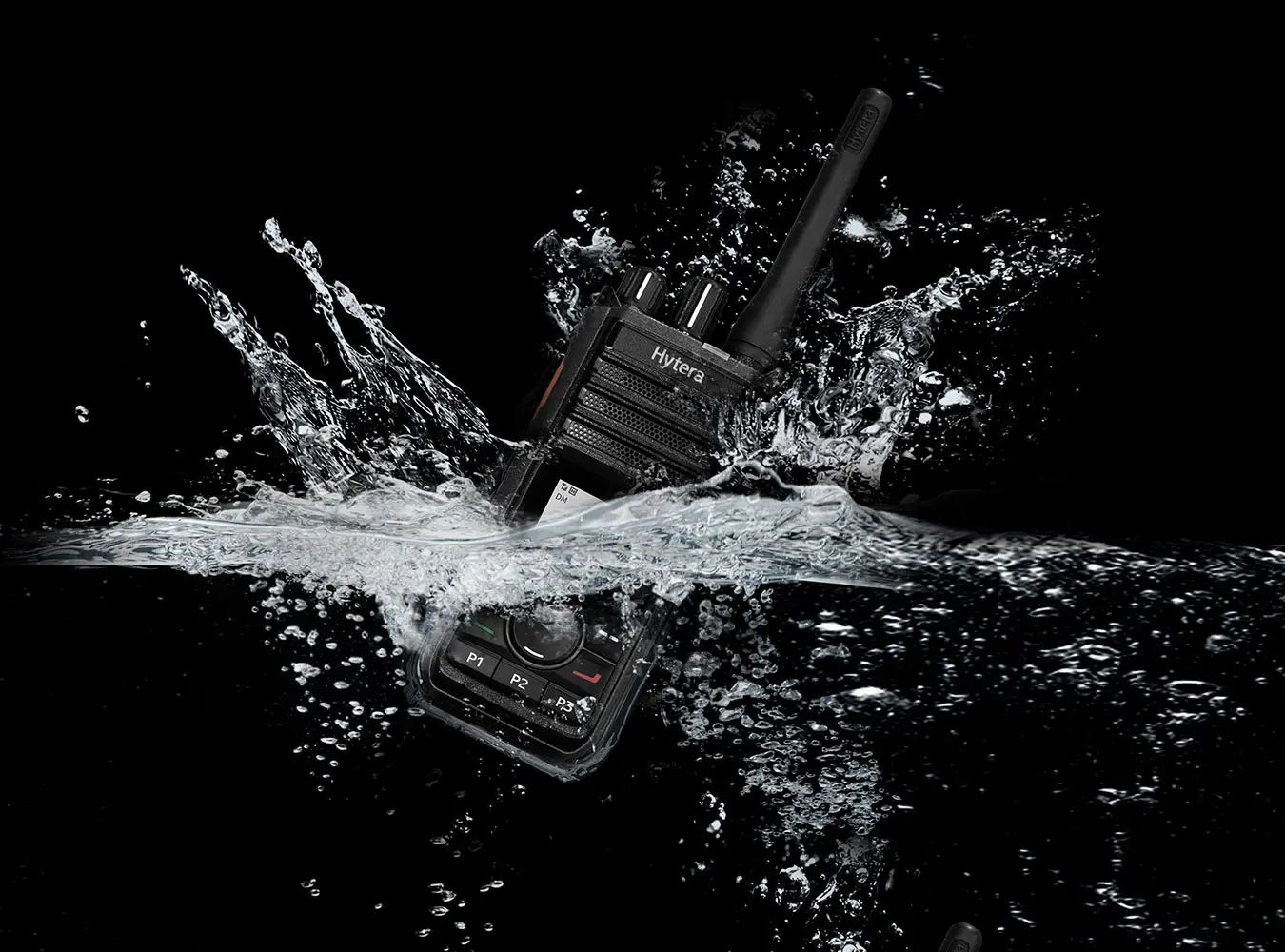
HP56X Professional DMR Waterproof Two-Way Radio
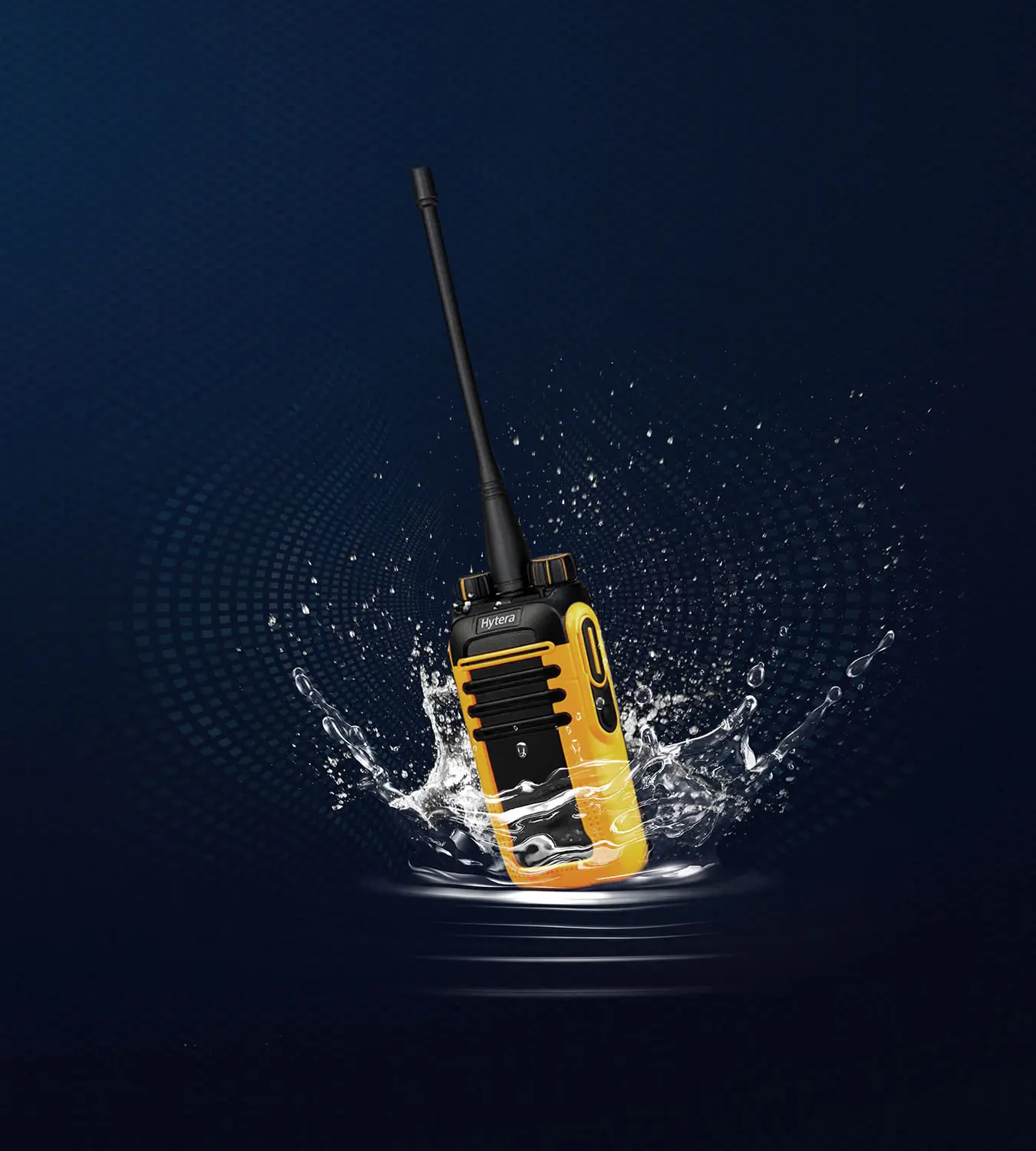
BD61X Business DMR Waterproof Two-Way Radio
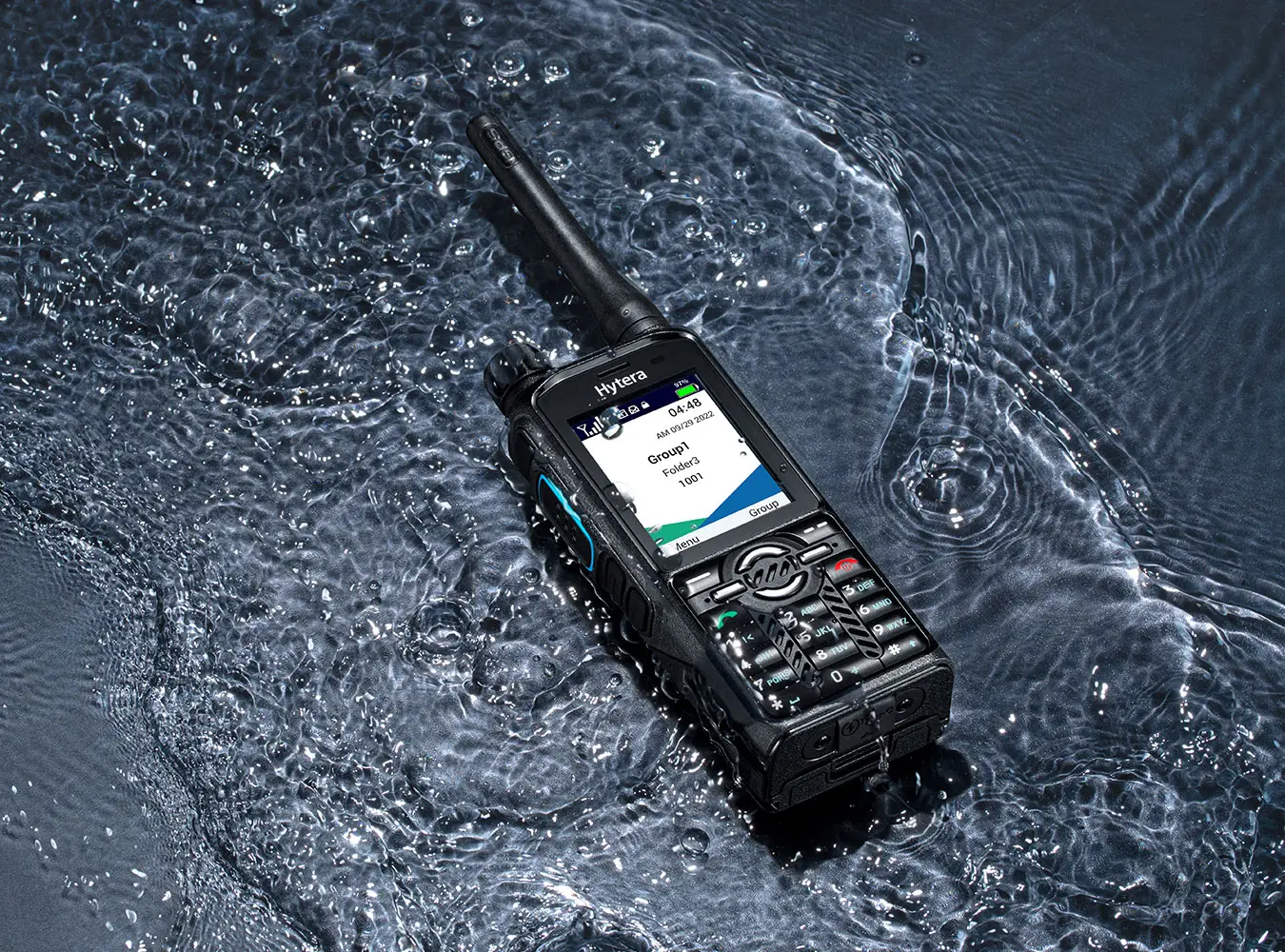
PT590 Mission Critical TETRA Waterproof Two-Way Radio
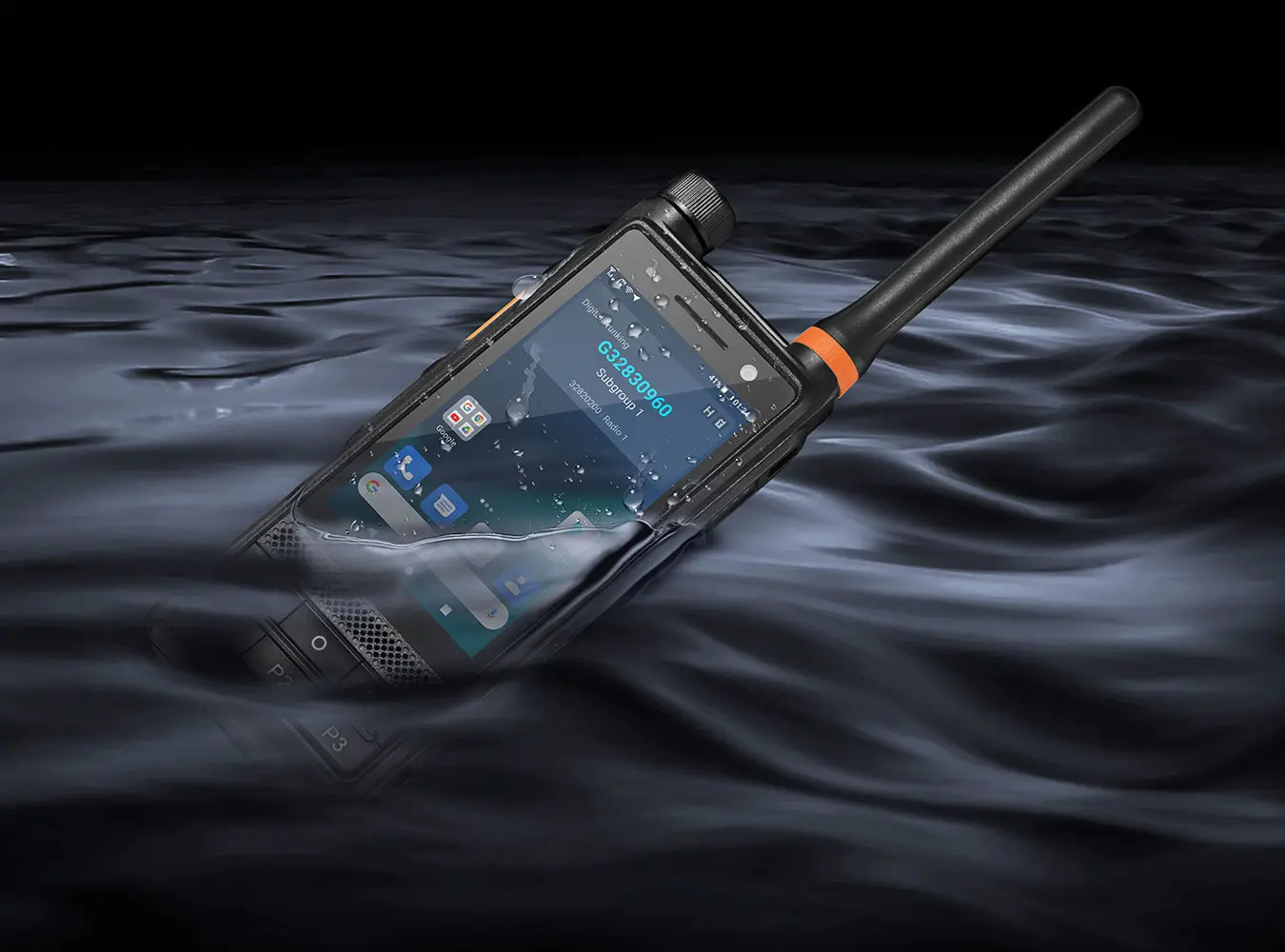
PDC680 Dual-mode Waterproof Radio
Related Video
![HP78X IPX6/IPX8 Test]()
![player button]()
HP78X IPX6/IPX8 Test
01:58
![PT590 Mission Critical TETRA Portable Radio Video]()
![player button]()
PT590 Mission Critical TETRA Portable Radio Video
1:00
![Hytera Dual-mode Rugged Radio Mechanical Test]()
![player button]()
Hytera Dual-mode Rugged Radio Mechanical Test
02:44
![HP6 Series Professional DMR Portable Two-way Radio]()
![player button]()
HP6 Series Professional DMR Portable Two-way Radio
01:55
![HP5 Series Professional DMR Portable Two-way Radio]()
![player button]()
HP5 Series Professional DMR Portable Two-way Radio
01:02
Frequently Asked Questions
Can you explain the IP rating system and how it relates to waterproof two-way radios?
The IP rating system, which stands for Ingress Protection, is a standardized classification system that defines the level of protection provided by enclosures against solid particles like dust and liquids like water. The IP rating is often used to indicate how well electronic devices, including waterproof two-way radios, are protected against environmental factors.
The IP rating is composed of two digits. The first digit represents the device's protection against solid particles, while the second digit indicates its resistance to liquids. For example, an IP67 rating for a waterproof two-way radio signifies that it has complete protection against dust and can withstand immersion in water up to a depth of 1 meter for 30 minutes.
In relation to waterproof two-way radios, the IP rating system helps consumers understand the device's capability to resist water and moisture. Radios designed for use in water-prone or outdoor environments are often assigned higher IP ratings, indicating better protection. For instance, the higher second digit (like 7 or 8) suggests increased water resistance, making the radio suitable for scenarios involving rain, splashes, or even submersion.
When selecting a waterproof two-way radio, understanding the IP rating is crucial. A higher IP rating corresponds to greater durability against water exposure. Professionals and outdoor enthusiasts can use this information to match the radio's IP rating with the intended environment of use, ensuring that the radio can withstand the conditions it will encounter. It's important to note that while a higher IP rating provides enhanced protection, no device can be completely impervious to water, so prudent care should still be exercised to avoid unnecessary exposure to moisture.
How do waterproof two-way radios differ from standard two-way radios in terms of durability?
Waterproof two-way radios and standard two-way radios exhibit notable differences in terms of durability, stemming from their distinct design and construction. Waterproof radios are purposefully engineered to withstand exposure to water and moisture, making them suitable for use in wet environments. These radios are equipped with sealed casings that provide a barrier against water ingress, along with rubber gaskets and seals that prevent moisture from seeping into sensitive components. Moreover, the internal circuitry of waterproof radios is often coated with water-resistant materials to enhance their resilience.
On the other hand, standard two-way radios lack the specialized features that waterproof models offer. Their design is generally more open, with exposed buttons, ports, and openings that leave them vulnerable to water infiltration and other environmental factors. The absence of protective gaskets and seals in standard radios increases the risk of water damage, potentially leading to malfunctions. Unlike waterproof radios, standard models typically lack the robust water-resistant coatings that safeguard the internal electronics from moisture-related issues.
Do waterproof two-way radios offer encryption features to secure communication?
Yes, many waterproof two-way radios are equipped with encryption features designed to bolster communication security. Encryption is a sophisticated process that involves encoding transmitted messages into complex patterns that can only be decoded using specific keys possessed by authorized recipients. This ensures that conversations remain confidential and impervious to unauthorized access or interception. Waterproof two-way radios integrated with encryption capabilities are particularly relevant in scenarios where privacy and sensitive information exchange are paramount, such as in military operations, law enforcement activities, and corporate communications.
The inclusion of encryption features in waterproof radios adds an additional layer of protection, safeguarding against unauthorized listeners and potential security breaches. By encrypting transmissions, these radios enable users to communicate openly without the risk of critical information falling into the wrong hands. However, it's important to note that encryption features may vary among different models and brands of waterproof two-way radios. Organizations and individuals seeking to ensure secure communication should carefully review the specifications and capabilities of the radios they are considering, taking into account their unique communication needs and security requirements.
What features should I look for in a waterproof two-way radio?
When selecting a waterproof two-way radio, there are several key features to consider. Look for radios with a high IP (Ingress Protection) rating, indicating their water and dust resistance level. Additionally, consider the radio's range, battery life, and ease of use. Some models might offer advanced features such as GPS tracking, emergency alert buttons, and noise-canceling capabilities.
What is the average range of communication for waterproof two-way radios in outdoor settings?
The average communication range for waterproof two-way radios in outdoor settings is typically around 1 to 3 miles (1.6 to 4.8 kilometers) under ideal conditions. However, real-world range can vary significantly based on terrain, obstructions, power output, frequency, weather, and other factors. Users should consider these factors when choosing and using waterproof radios for their specific communication needs.
How user-friendly are waterproof two-way radios, especially for beginners?
Waterproof two-way radios are generally designed to be user-friendly, even for beginners. They feature simplified controls, clear labels, and often come with pre-programmed channels and voice prompts to facilitate easy usage. User manuals and tutorials further support beginners in understanding the radio's functions. The combination of ergonomic design and intuitive interfaces ensures that users of all skill levels can effectively communicate using these radios.



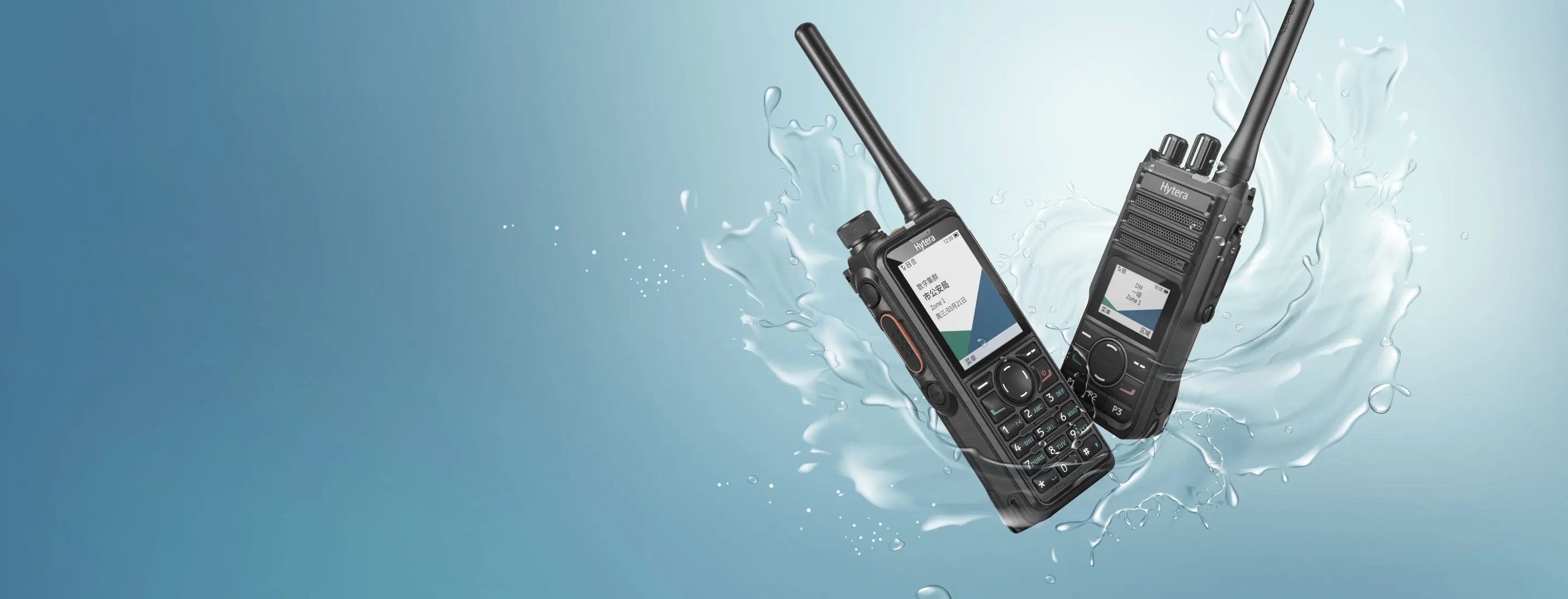
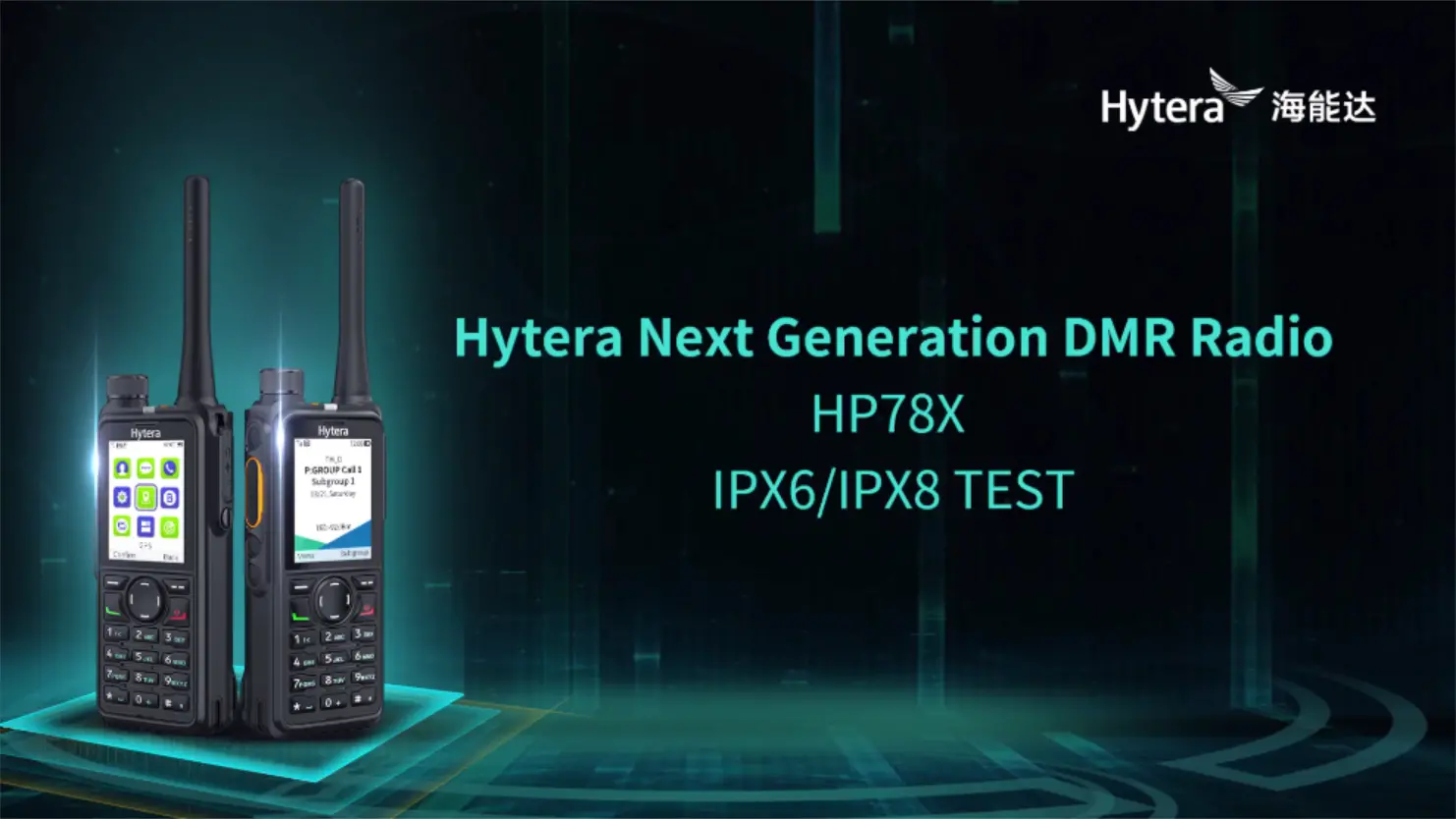
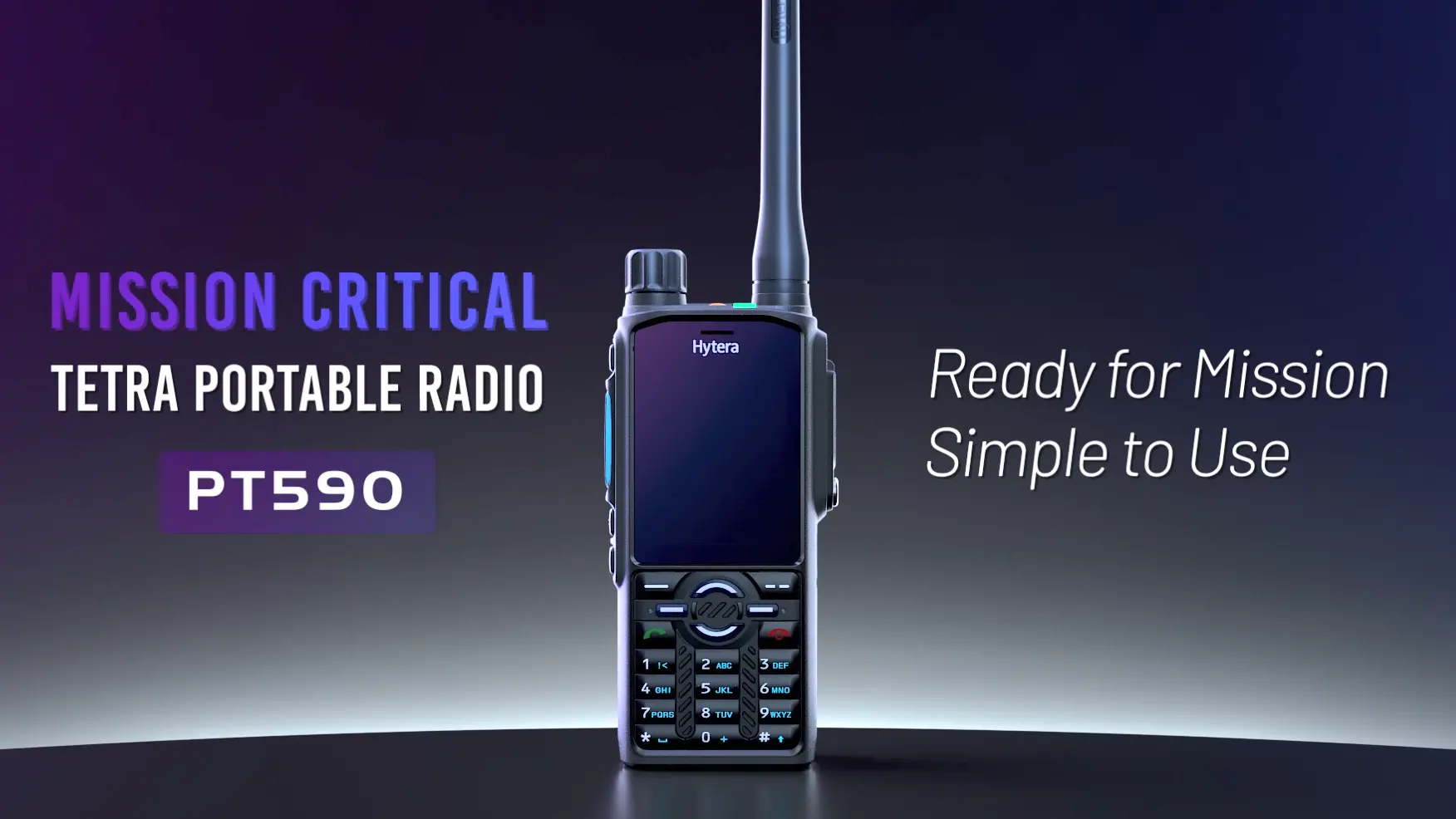
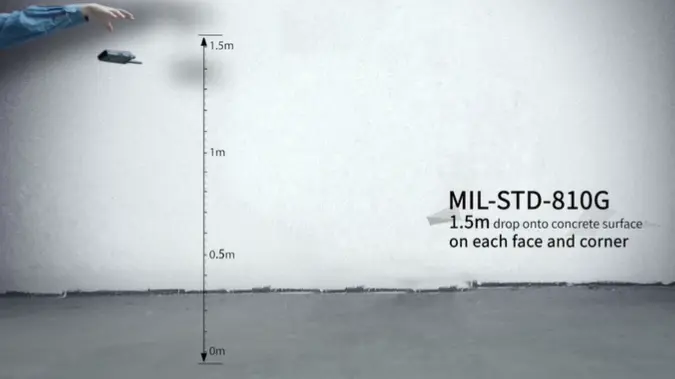
.png_n.webp)
